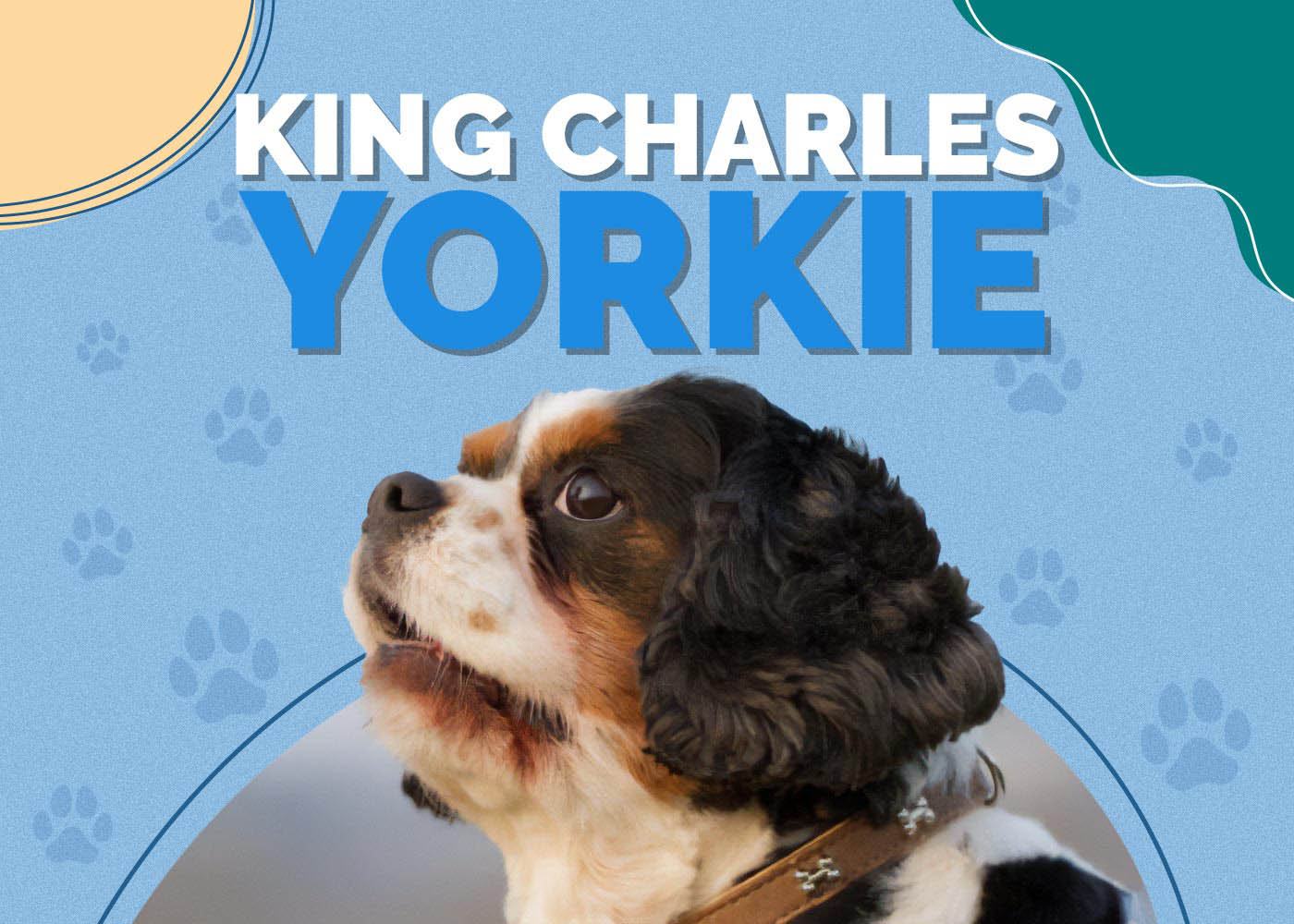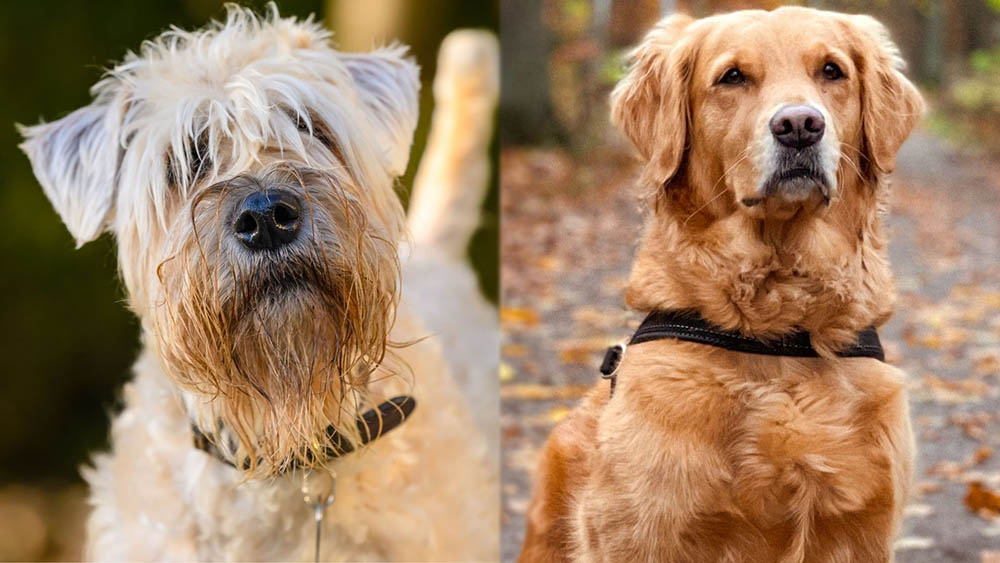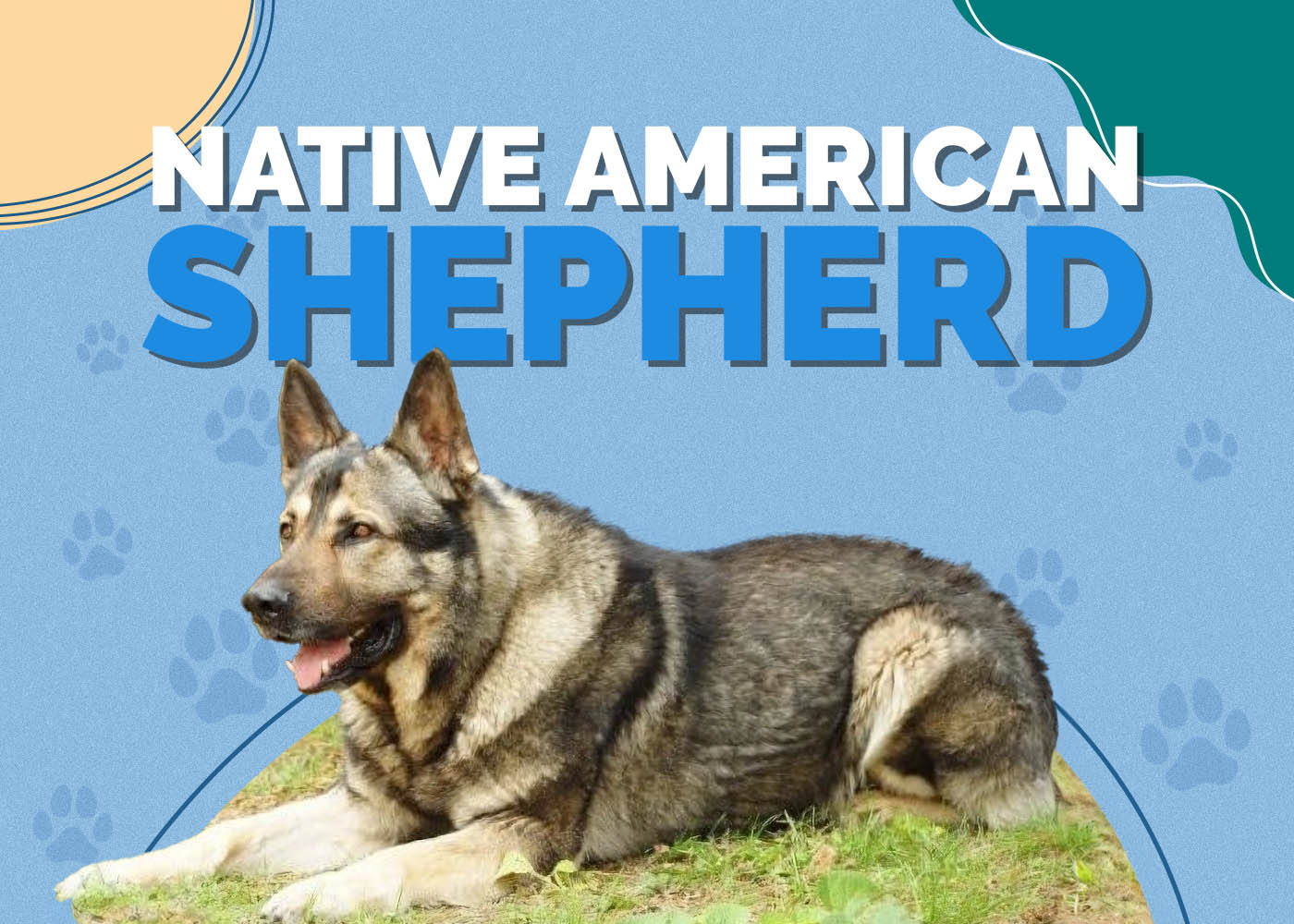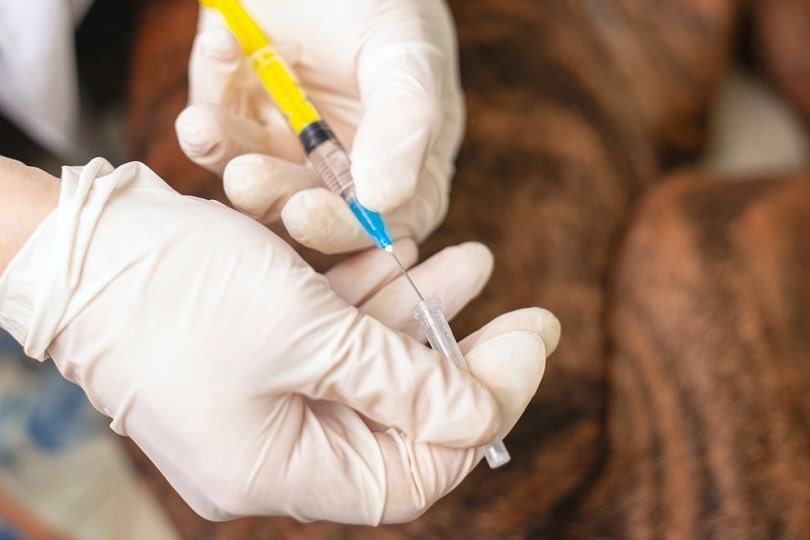Shiba Inu vs. Akita: What’s the Difference? (With Pictures)

Updated on
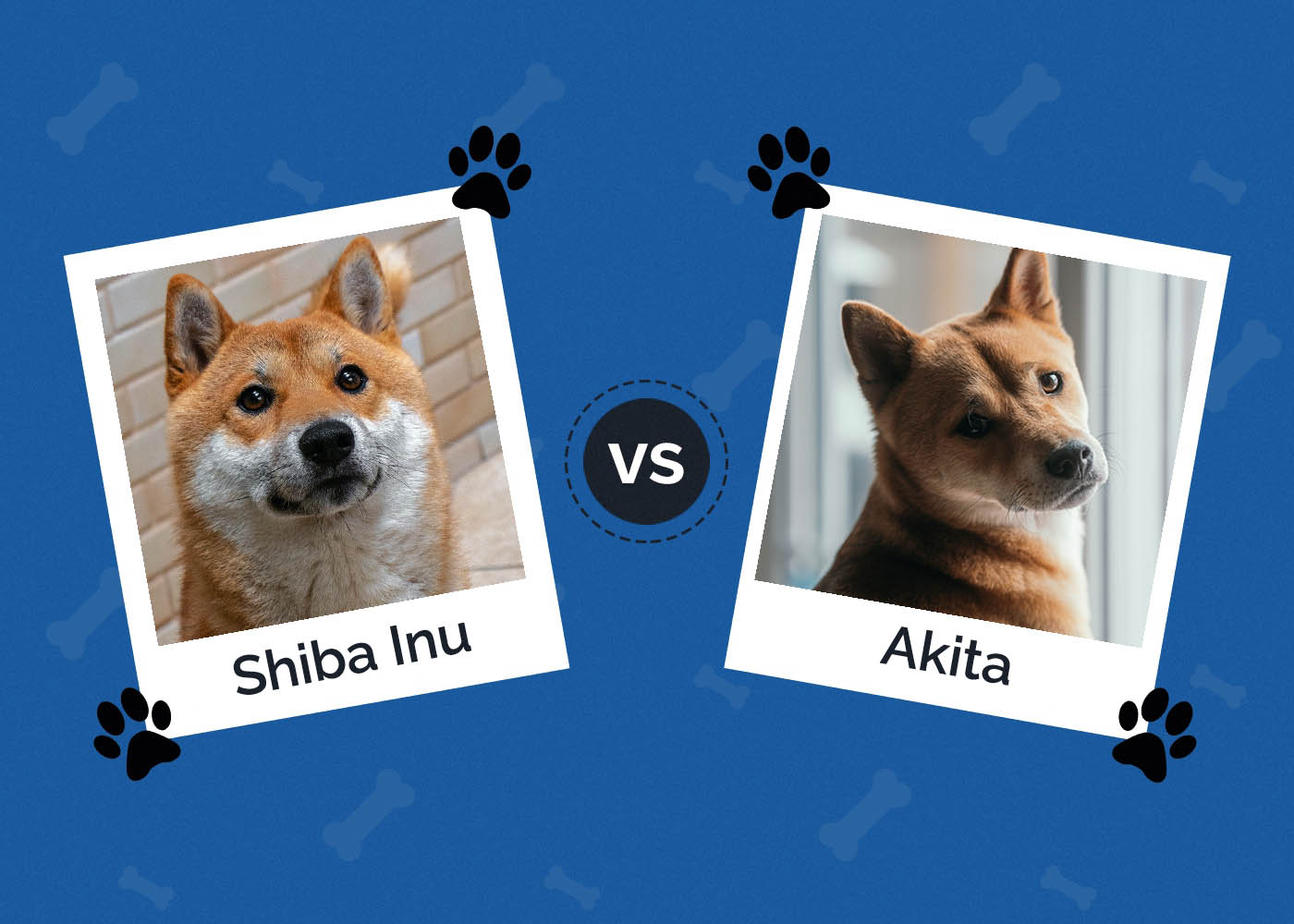
You’ll find that the Shiba Inu and Akita share a lot of qualities. That’s because both are Spitz-type breeds that come from Japan. Both have a history that includes hunting, albeit for different purposes. They even look similar with personalities to match. Comparing the two means drilling down to the subtle variations between them.
We’ll explore both the similarities and differences between the two. We’ll highlight the traits that may sway you one way or another when choosing between the pair. You’ll learn about each one’s place in Japanese history that may also provide some strong talking points. In the process, you’ll gain some knowledge about this class of breeds.
Shiba Inu vs. Akita: Visual Differences
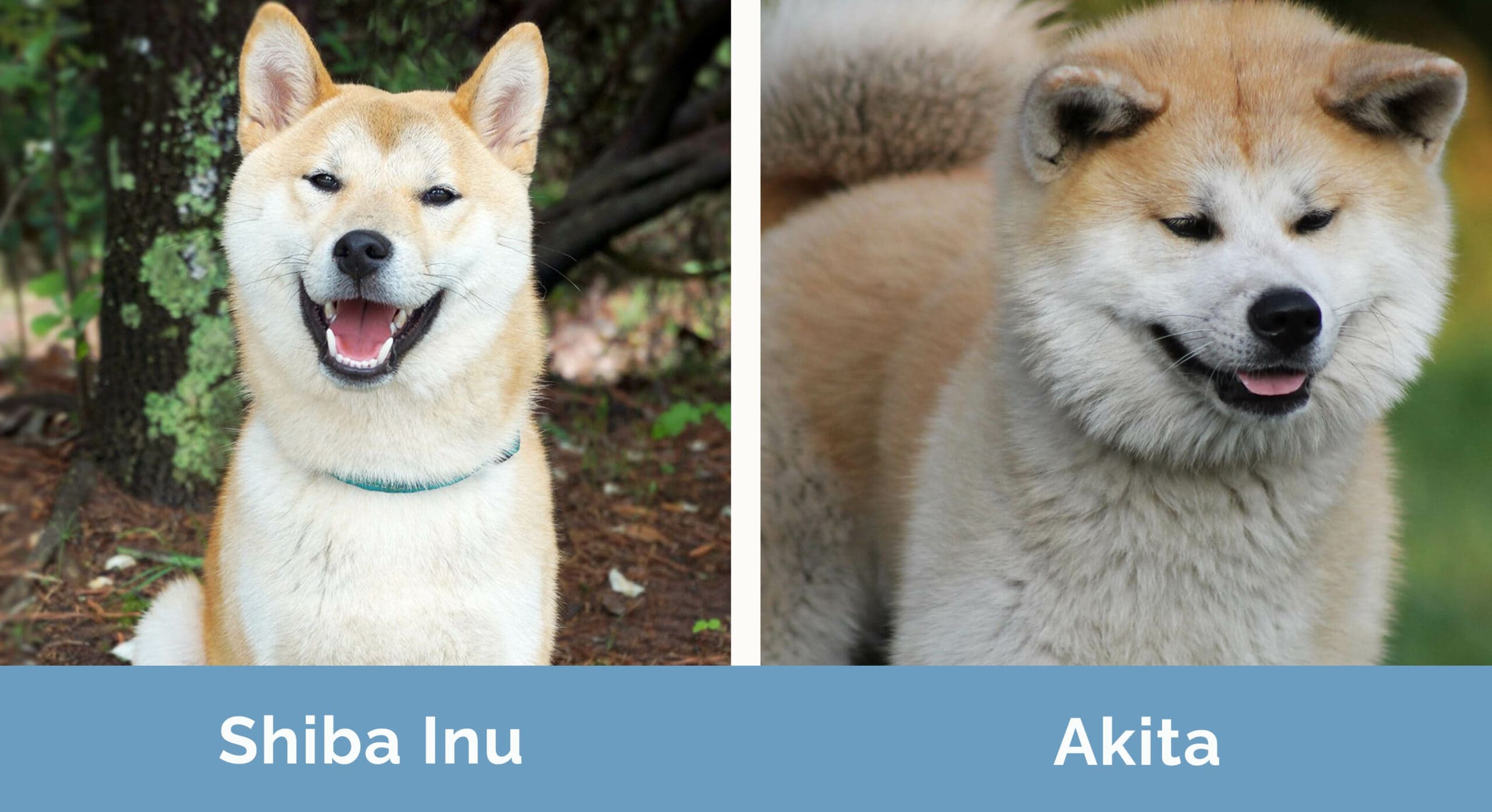
Akita Inu vs. Shiba Inu: At a Glance
Here are the quick-fire facts that you need about each of these gorgeous breeds.
- Height: 13-17 inches
- Weight: 17-25 pounds
- Lifespan: 8-11 years
- Temperament: Adaptable, shy around strangers, intelligent
- Energy Level: Medium to low-medium
- Trainability: Good but has an independent streak
- Health: Good
- Height: 24-28 inches
- Weight: 70-120 pounds
- Lifespan: 10-13 years
- Temperament: Affectionate, very loyal, wary of strangers
- Energy Level: High
- Trainability: Good but stubborn
- Health: Better than average
Shiba Inu Overview
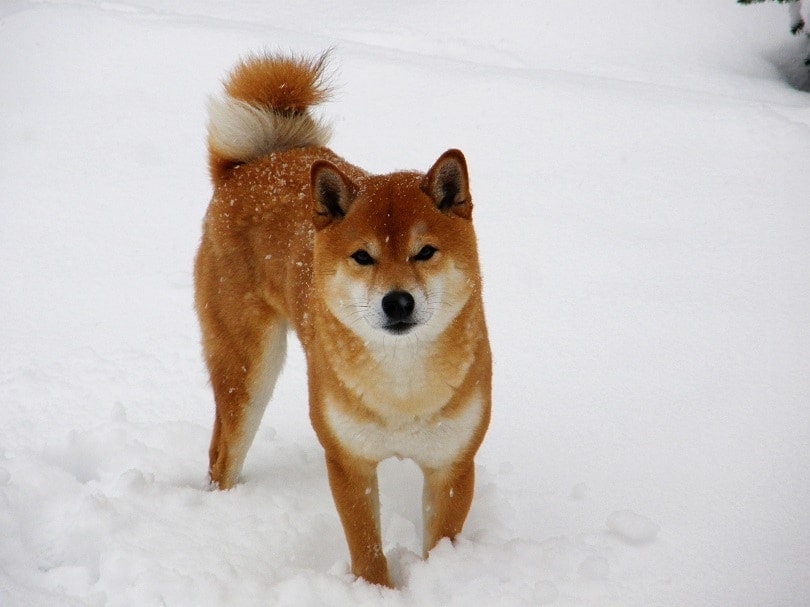
The Shiba Inu’s history goes back over 9,000 years. Both this pup and the Akita share a common ancestor, the Jomonjin dog. That means you’ll see a lot of similarities between the two. The differences lie in size and the role they served for people. The appearance between the two has a distinctive curled tail and short, pointy ears.
Shiba Inu Size
The original Jomonjin dog ended up in three different size classes, thanks to selective breeding. The Shiba Inu occupies the small one. However, that doesn’t take anything away from their muscular stature. The official American Kennel Club (AKC) standards call for a dog that is 13–17 inches tall at the withers or shoulders. The pup is on the smaller size, weighing in at 17–23 pounds.
Shiba Inu Temperament
The Shiba Inu is highly adaptable. They can do well in any household, even in an apartment. They are moderately cold-tolerant, given their background, and are somewhat reserved with strangers, although they are affectionate with family. That’s one of the trademark qualities of this breed and others in the Spitz group.
This pup is sensitive to harsh reprimands. Positive reinforcement is the best way to connect and bond with this dog. They tend to get attached to their owner and aren’t especially tolerant of being alone. This dog has a moderately high tendency to bark, which you’ll need to rein in early. Early socialization is vital, considering that this breed isn’t the most dog-friendly.
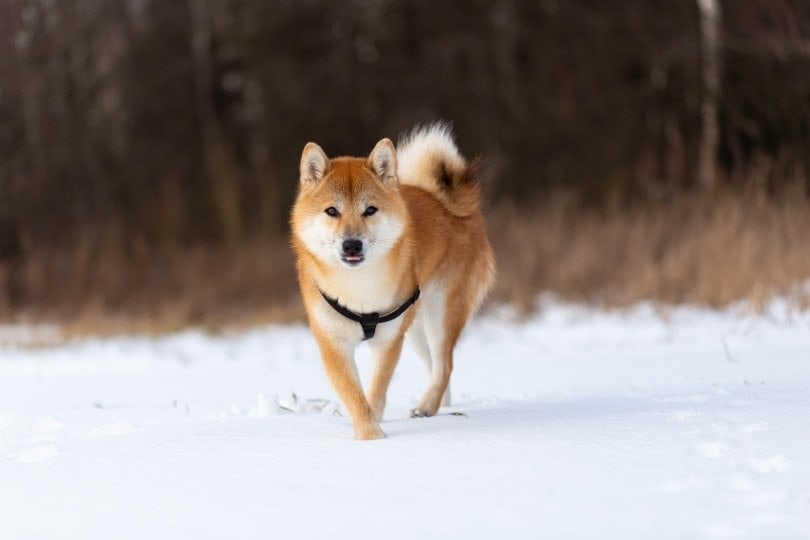
Shiba Inu Training
The Shiba Inu is an intelligent dog. They will pick up new tricks and commands quickly. However, this is an independent pup that may pose a challenge for first-time pet owners. While friendly enough, they still have a mind of their own. You will likely need to persuade them that obeying is a good thing. Consistency and positive reinforcement are the keys to reaching them.
Their hunting background means that the Shiba Inu has a strong prey drive and wanderlust potential. They aren’t the best choice for a household with other pets and will likely chase the family cat and not get along the best with another dog. Early socialization can help overcome these obstacles.
Shiba Inu Care and Maintenance
The Shiba Inu is a challenge when it comes to routine maintenance because of how much they shed. Break out the vacuum cleaner when you invite this pup to your home. Regular brushing can help keep it under control. You should also check their ears occasionally because of a risk of ear infections. Plucking the hair from them is an effective way to control this issue.
- A low tendency for weight gain
- Adaptable
- Intelligent
- Stubborn streak
- Reserved personality
Akita Overview
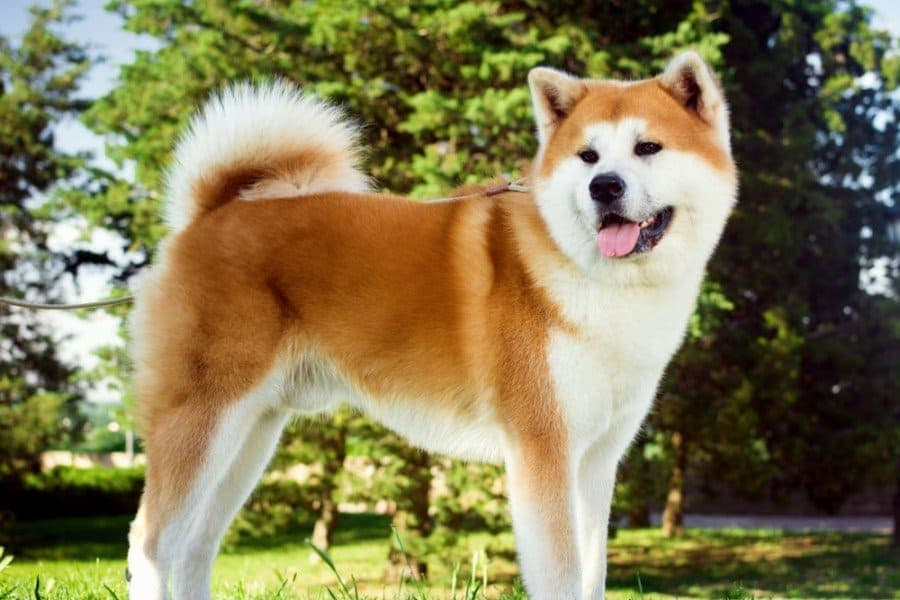
The Akita has a presence that catches your eye immediately. They have an unmistakable independent streak that won’t be tolerant of other pets in the household. They share a lot of the same personality traits with the Shiba Inu, given their common ancestor. However, there are some significant differences between the two breeds that are worth exploring.
This pup has a longer history in the United States than the Shiba Inu by about 20 years. Both breeds suffered the wrath of World War II. The conflict nearly wiped out the two of them. Enthusiasts kept them alive and made their entry into America possible. That act ultimately saved them. After all, there isn’t a lot not to like about these dogs.
Akita Size
The Akita belongs in the large size of the Spitz-group breeds. They get 24 to 28 inches high and weighs between 70 and 130 pounds. Despite their size, this pup is surprisingly long-lived for a dog of this size, surviving up to 13 years. Like the Shiba Inu, this is a muscular dog with powerful legs and a large head. They also have pointy ears and a broad muzzle with deeply set eyes.
Akita Temperament
The Akita is affectionate with family, but with others, not so much. This is also a loyal pup that will guard your home and family. Early socialization is imperative because of their reserved temperament. They will make a better pet if you expose them to other people while still young and impressionable. They sometimes are vocal, which is something else you’ll need to control.
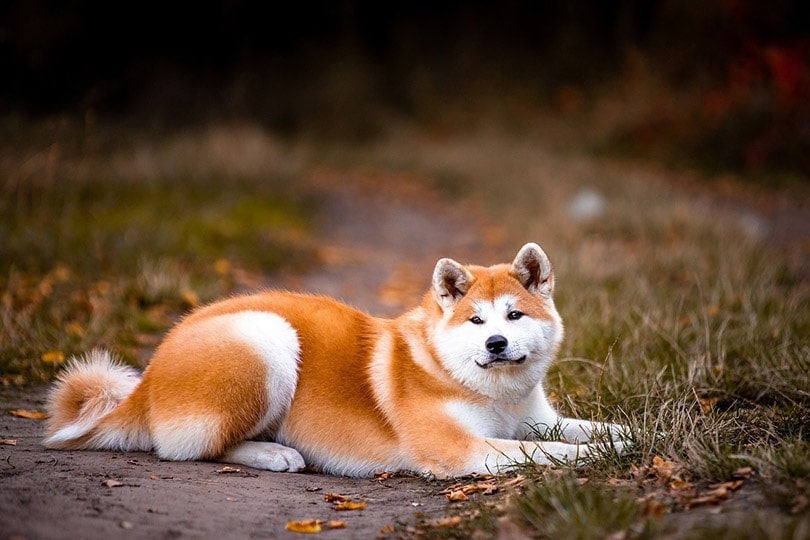
Akita Training
While the Akita is intelligent, they are also independent, which can make training a challenge. This is not a dog for the first-time pet owner as a result of it. Because of their strength, it’s imperative to start early, given their adult size. Positive reinforcement and consistency are the keys to success with this pup. This is a sensitive pooch and won’t take well to harsh reprimands.
We suggest using treats as a training aid to overcome their willfulness. However, make sure that they don’t make up any more than 10% of their food intake.
Akita Care and Maintenance
The Akita doesn’t shed a lot year-round. Instead, they lose their undercoat twice a year. Like other breeds in the Spitz family, like the Samoyed, they do decent job of keeping themself clean. However, you should plan on brushing them at least once a week to prevent mats from forming. Likewise, check their ears often to keep them clean.
- Relatively long-lived
- Playful
- Loyal
- Clean
- Large size
- Shedding twice a year
- Tendency to drool
Difference Between Akita and Shiba Inu
These two breeds are quite similar, given their common origin. Both of them had challenges surviving the ravages of World War II before enthusiasts brought them to the United States. That saved the Shiba Inu and Akita from extinction. Being served is a trait that both dogs show and is a product of their similar backgrounds.
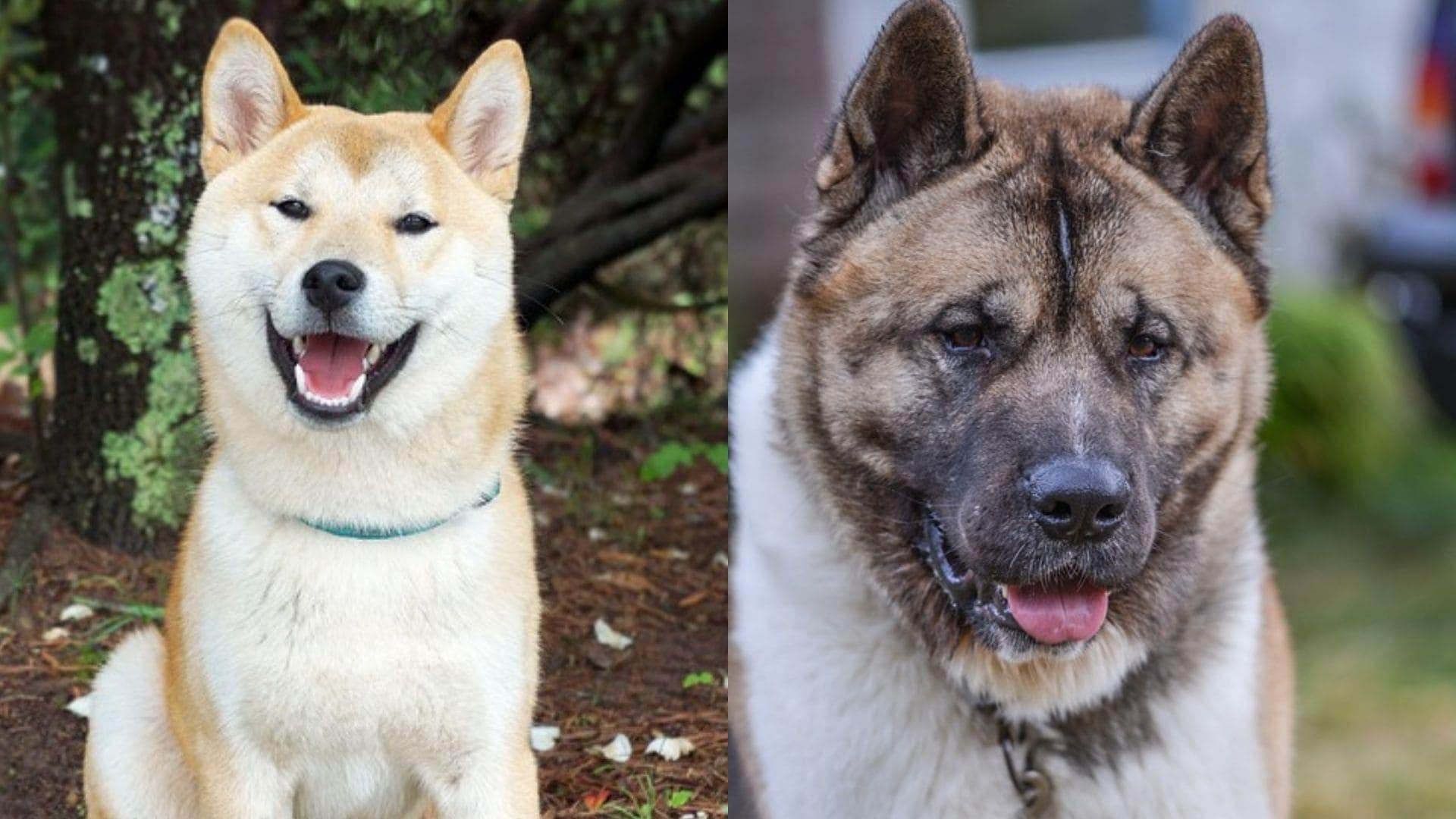
Size
Size, of course, is the primary difference between the two breeds. Both are strong and muscular animals for their stature. That explains, in part, their relatively healthy nature. Despite their varying sizes, the Shiba Inu and Akita should be screened for hip and elbow dysplasia. Reputable breeders will ensure that these tests are done.
Since the Shiba Inu is smaller, they will mature more quickly than the larger Akita. It’s essential to feed them a food meant for a breed of their size with either one. We also suggest monitoring their body condition to prevent obesity.
Temperament
Both breeds have a higher energy level. The Akita is often more intense and playful than the Shiba Inu. They also are more active, requiring more exercise. The former is less kid and dog-friendly than the latter. Size comes into play, too. You should supervise young children with an Akita in the home. Nevertheless, both dogs are affectionate with their families.
Training
The Shiba Inu and Akita are intelligent dogs. The former is a better choice for first-time pet owners than the latter. They are somewhat less stubborn and willful than the latter. The Shiba Inu is also less sensitive than the Akita, which will also make training easier. Both breeds have a tendency to be nippy when you, which you’ll need to manage early to prevent it from becoming a problem as an adult.
Care and Maintenance
The Shiba Inu has the edge when it comes to grooming. The Akita, with the thicker coat, requires more care. Both breeds are relatively healthy. However, routine vet examinations are essential. The Shiba Inu has a higher propensity for allergies. Therefore, it’s vital to check the coat regularly for signs of irritation. On the other hand, the Akita tends to gain weight if they don’t get enough exercise.
Shiba Inu vs. Akita: Which One Is Right for You?
The Shiba Inu is the more adaptable of the two dogs. They can take to apartment living quite easily. The Akita is not and prefers a large, fenced-in yard. As you may expect, both breeds are tolerant of the cold and less so of hot weather. They will handle winter walks well. The two have a strong prey drive and high wanderlust potential. Neither are dogs that you should let off-leash.
The question, therefore, of which dog is right for you boils down to size and space. While they will tolerate children, they’ll do better in a household with older children and adults. In any case, both breeds are excellent choices for the pet owner who can commit to early training and socialization. They are handsome pups with many pleasing traits for the right family.
See also:
- Akita vs Pitbull: The Main Differences (With Pictures)
- Jindo vs Akita: The Main Differences (With Pictures)
Featured Image Credit: (L) Gabriel Yuji, Unsplash | (R) Brock Wegner, Unsplash




